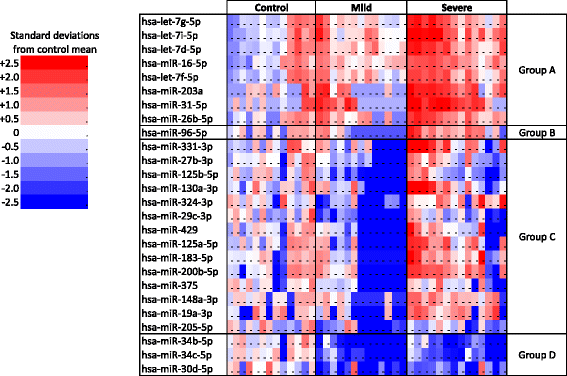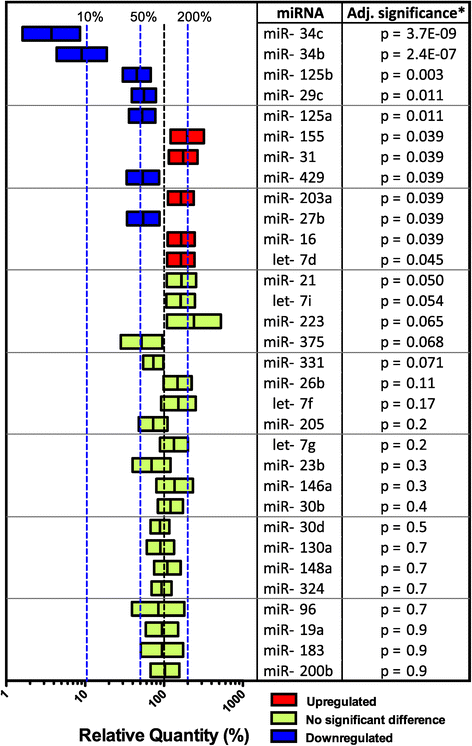Nasal mucosal microRNA expression in children with respiratory syncytial virus infection
- PMID: 25884957
- PMCID: PMC4387708
- DOI: 10.1186/s12879-015-0878-z
Nasal mucosal microRNA expression in children with respiratory syncytial virus infection
Abstract
Background: Respiratory syncytial virus (RSV) infection is a common cause of pediatric hospitalization. microRNA, key regulators of the immune system, have not previously been investigated in respiratory specimens during viral infection. We investigated microRNA expression in the nasal mucosa of 42 RSV-positive infants, also comparing microRNA expression between disease severity subgroups.
Methods: Nasal mucosa cytology specimens were collected from RSV-positive infants and healthy controls. 32 microRNA were selected by microarray for qPCR verification in 19 control, 16 mild, 7 moderate and 19 severe disease samples.
Results: Compared to healthy controls, RSV-positive infants downregulated miR-34b, miR-34c, miR-125b, miR-29c, mir125a, miR-429 and miR-27b and upregulated miR-155, miR-31, miR-203a, miR-16 and let-7d. On disease subgroups analysis, miR-125a and miR-429 were downregulated in mild disease (p=0.03 and 0.02, respectively), but not in severe disease (p=0.3 and 0.3).
Conclusion: microRNA expression in nasal epithelium cytology brushings of RSV-positive infants shows a distinct profile of immune-associated miRNA. miR-125a has important functions within NF-κB signaling and macrophage function. The lack of downregulation of miR-125a and miR-429 in severe disease may help explain differences in disease manifestations on infection with RSV.
Figures



References
-
- Glezen WP, Taber LH, Frank AL, Kasel JA. Risk of primary infection and reinfection with respiratory syncytial virus. Am J Dis Child. 1986;140(6):543–6. - PubMed
Publication types
MeSH terms
Substances
LinkOut - more resources
Full Text Sources
Other Literature Sources
Medical
Molecular Biology Databases

